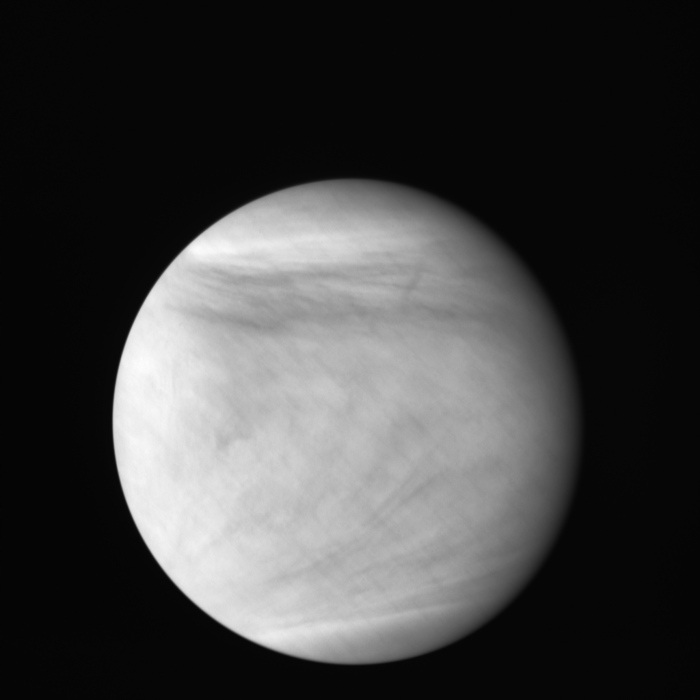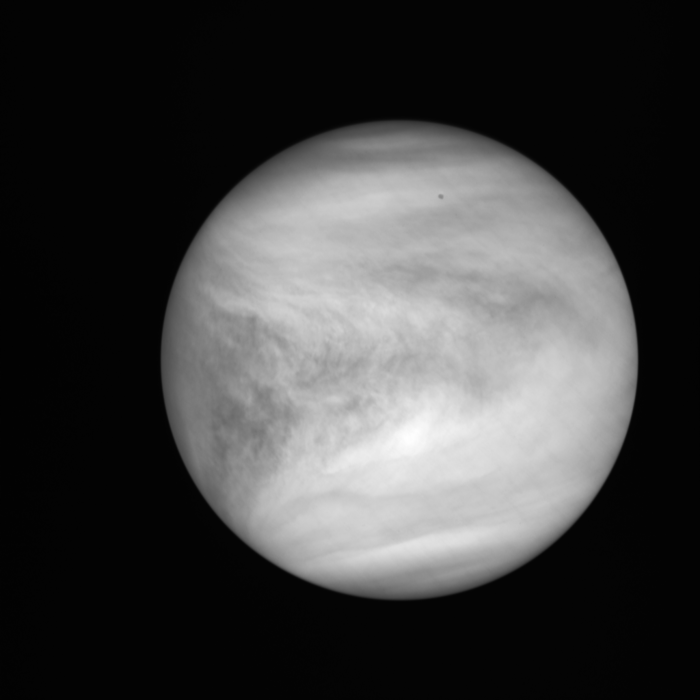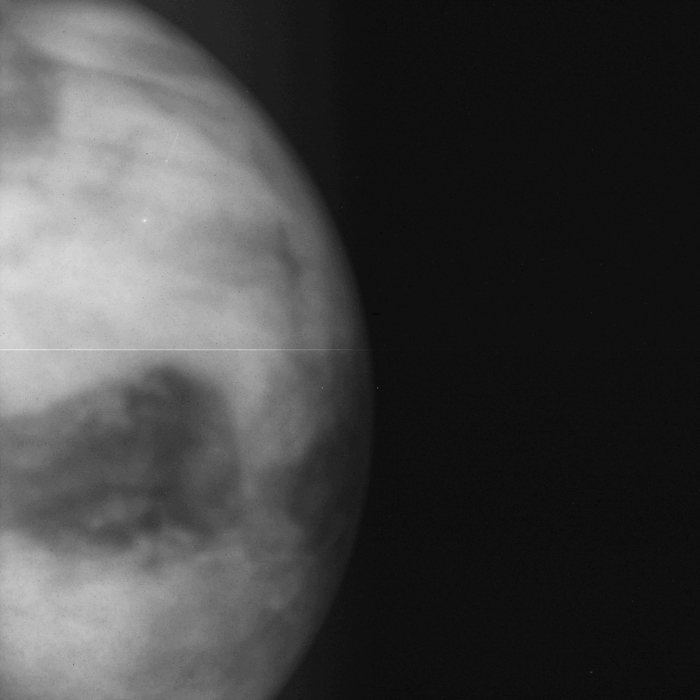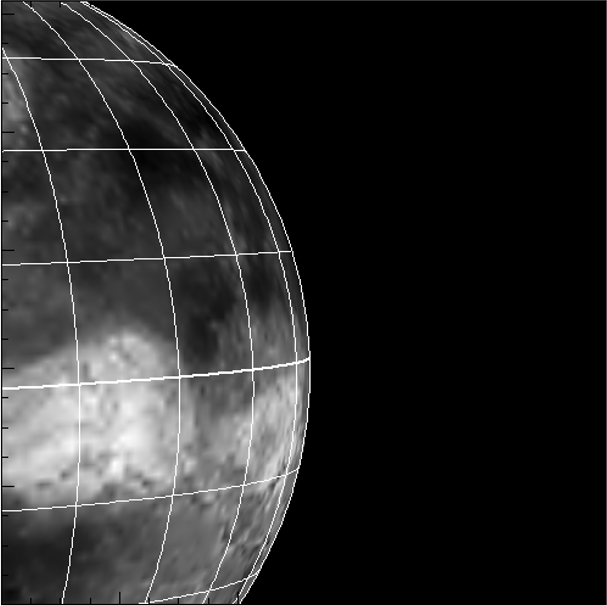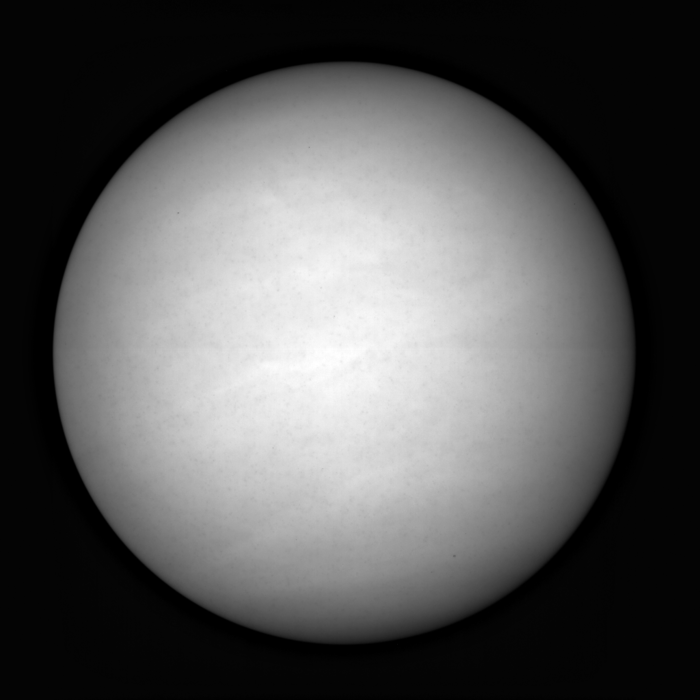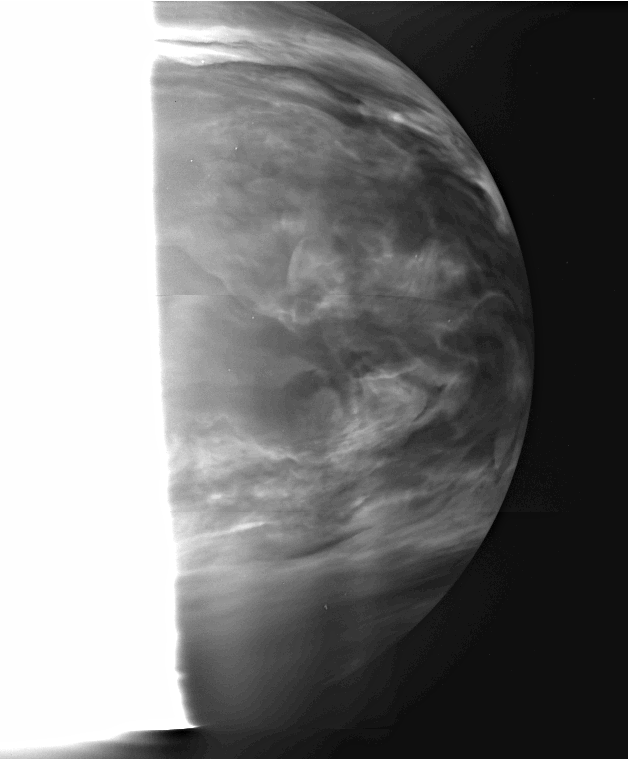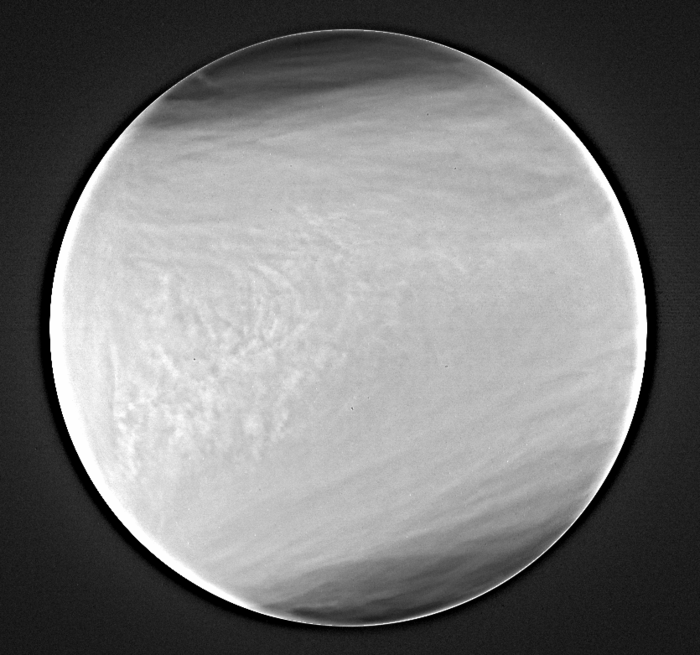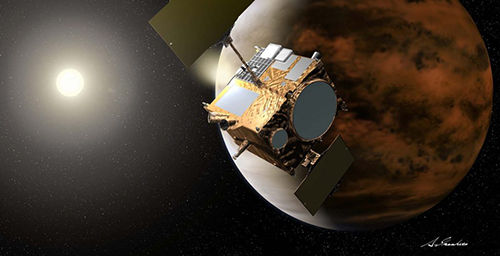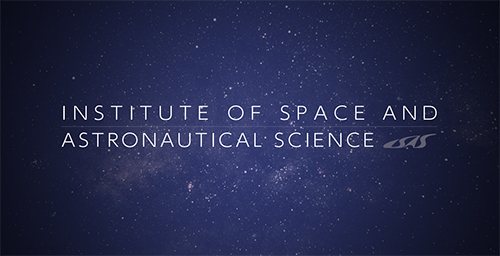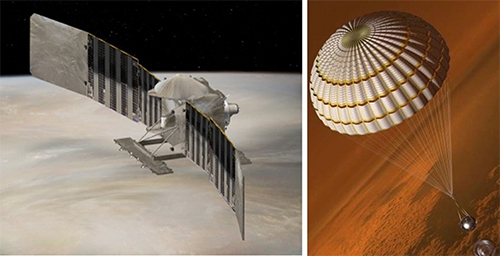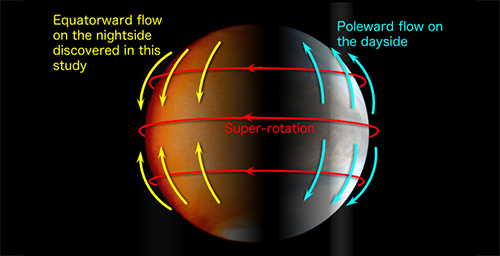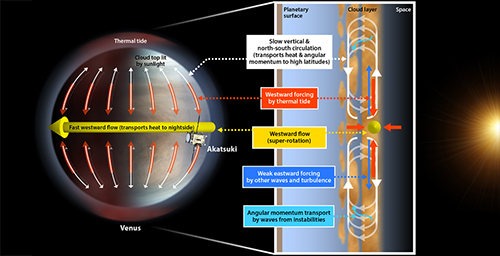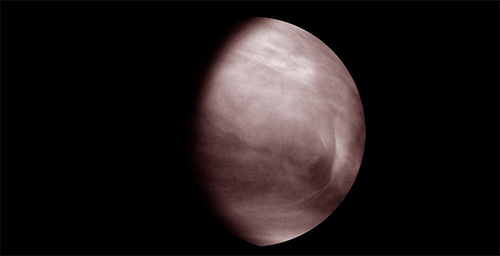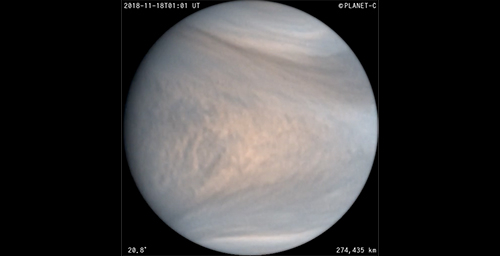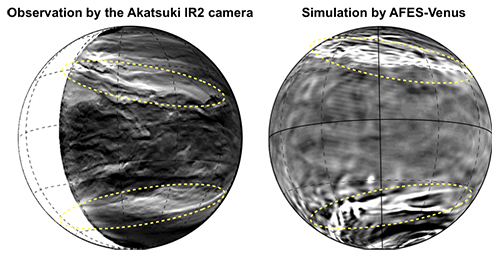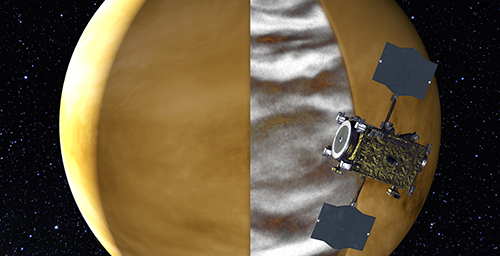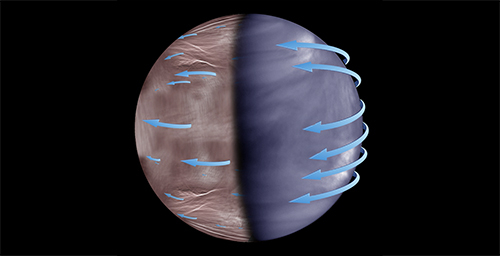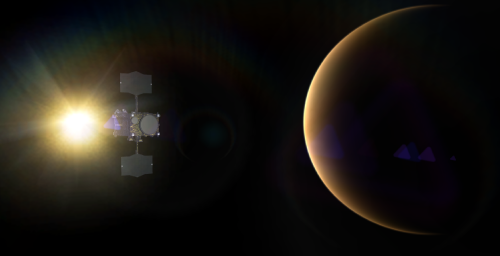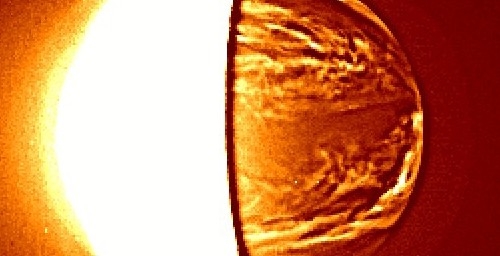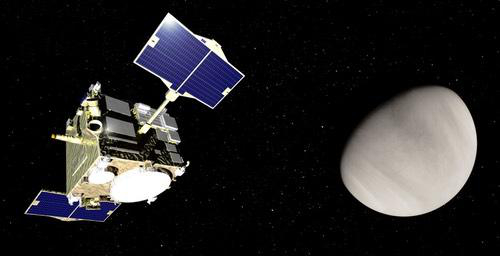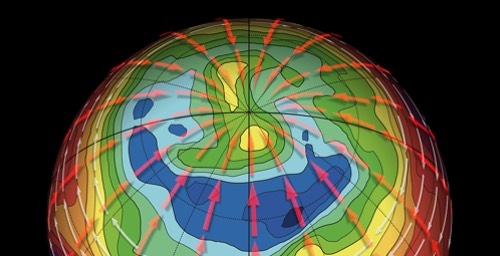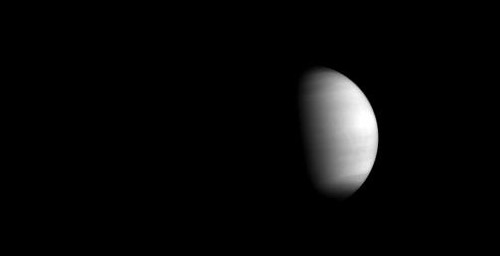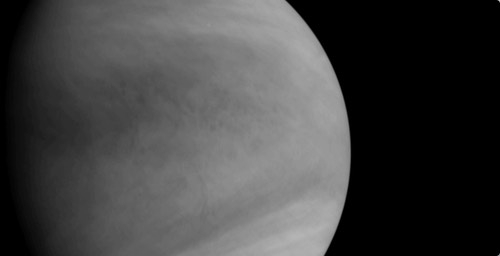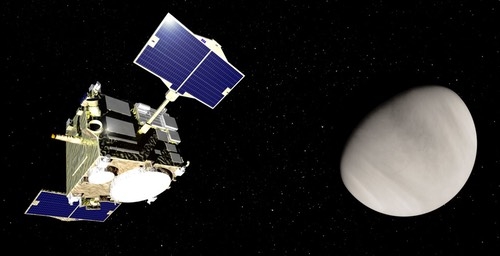On July 19, Akatsuki celebrated 1st Venus's year anniversary (a year on Venus is 225 Earth days). Akatsuki keeps working well and continues to gather lots of data. The four cameras aboard the Venus Climate Orbiter "Akatsuki" keep sending down images.
UVI (283 nm)
This 283-nm image was acquired with UVI at 13:13 UT on 25 April 2016. As this wavelength is in the SO2 absorption band, we can investigate the distribution of materials (SO2) for the Venus clouds (sulfuric acid). The spacecraft altitude was 108,000 km. © ISAS/JAXA
UVI (365 nm)
This 365-nm image was acquired with UVI at 16:17 UT on 6 May 2016. Although the absorbent of this wavelength is still unknown, higher contrast allows to study the cloud morphology and dynamics in detail. The spacecraft altitude was 80,000 km. © ISAS/JAXA
IR1 (1.01 μm)
This 1.01-μm night-side image was acquired with IR1 at 00:38 UT on 21 January 2016. This visualizes spatial variations of thermal emission from the Venus surface with dark features corresponding to low-temperature or high-elevation areas. The large low-temperature area is Aphrodite. The image compares to the elevation map in which higher elevation is brighter (courtesy of the National Institute of Advanced Industrial Science and Technology). The spacecraft altitude was 38,000 km. © ISAS/JAXA
IR1 (0.90 μm)
This 0.90-μm day-side image was acquired with IR1 at 18:01 UT on 06 May 2016. Although the Venus disk appears featureless at a glance, one can find numerous cloud patterns once processed. Such cloud patterns are believed to originate from several km below the cloud top. The image processing includes interpolation of a few lines in the center and enhancement of the features. The spacecraft altitude was 65,000 km. © ISAS/JAXA
IR2 (2.26 μm)
This 2.26-μm night-side image was acquired with IR2 at 07:03 UT on 26 April 2016. Spatially-inhomogeneous clouds are visualized as silhouette with the back light of thermal emission from the lower and hotter atmosphere. The clouds seem to be very complex and turbulent. The image has been processed to enhance the features. The spacecraft altitude was 76,000 km. © ISAS/JAXA
IR2 (2.02 μm)
This 2.02-μm day-side image was acquired with IR2 at 16:07 UT on 06 May 2016. At this wavelength, variations in cloud top altitude are visualized due to the light absorption by CO2, the primary component of the Venus atmosphere. The image displays relatively low cloud-top altitudes near both poles and complex clouds near the equator. The image has been processed to enhance the features. The spacecraft altitude was 81,000 km. © ISAS/JAXA
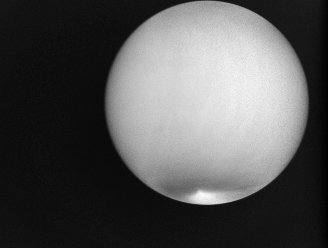
This 10-μm image was acquired with LIR at 08:15 UT on 15 April 2016. LIR visualizes spatial variations of cloud-top temperature with remarkable high temperature in the south polar region. The impressive bow-shape feature, seen in December 2015, is not obvious. However, similar structures exist and are noticed once the contrast of the image is enhanced. The spacecraft altitude was 63,000 km. © ISAS/JAXA

